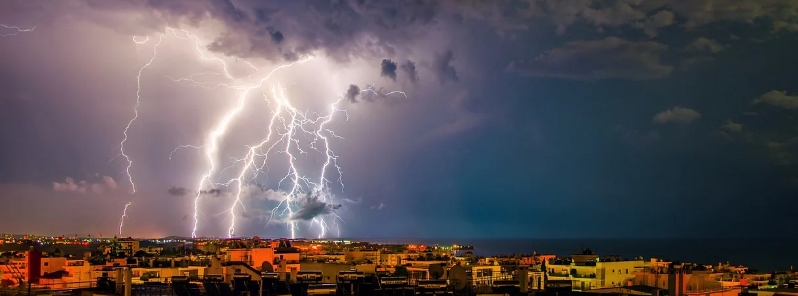More than 130 killed as severe thunderstorms hit India, Bihar records one of its highest daily death tolls caused by lightning

Heavy rain and severe thunderstorms since mid-June have resulted in casualties and damage across India. As of early Friday, June 26, 2020, the death toll stands at 133– mostly from the state of Bihar, which recorded one of its highest daily tolls from lightning on Thursday. The death toll is expected to rise as more reports come in.
85 deaths were reported throughout east Bihar and 24 more across north Uttar Pradesh on June 25, with another 9 in Bihar and 15 in Assam on Friday. More than 20 people sustained injuries across both states.
The governments of Bihar and Uttar Pradesh both announced a compensation of about 5 300 dollars or 400 000 rupees for the next of kin of the victims.
Lightning strikes during the annual June – September monsoon season are fairly common in the country, but Lakshmeshwar Rai, Bihar's disaster management minister, noted that this was one of the state's highest daily tolls from lightning.
Rai warned that the death toll may increase as the government is still waiting on more casualty reports from the interior parts of the state.
Prime Minister Narendra Modi expressed his condolences to the victims' families, adding the state governments were carrying out prompt relief work.
"In some districts of Bihar and Uttar Pradesh, heavy rains and falling lightning [had] caused tragic news of the death of many people," the PM posted on Twitter.
"The state governments are engaged in relief work with promptness. I express my condolences to the families of those who have lost their lives in this disaster."
In 2018, more than 2 300 people were killed by lightning strikes in the country, according to the National Crime Records Bureau. Last year, 239 people died in Uttar Pradesh alone.
Heavy rain to locally very heavy rain and thunderstorms are forecast over north-east and east states into June 28, while isolated heavy rain is expected over parts of southern states.
Featured image credit: Pixabay

In my research article, Helical Sun, that was published in the beginning of this month in the Nexus (magazine) https://nexusmagazine.com/product/the-helical-sun/?v=35b5282113b8 I explained in details the correlation between thunderstorm and cosmic rays. I also, explained why lightning strikes and their intensity have increased enormously in the last a few years, especially since 2018.
In my research article, Helical Sun, that was published in the beginning of this month in the Nexus (magazine) https://nexusmagazine.com/product/the-helical-sun/?v=35b5282113b8 I explained in details the correlation between thunderstorm and cosmic rays. I also, explained why lightning strikes and their intensity have increased enormously a few years, especially since 2018.
The answer to this mystery might lie in how thunderclouds possess vast numbers of electrically charged water droplets and ice nuggets, which Gurevich and his colleagues call “hydro meteors.” In such energetic surroundings, cosmic rays 10,000 to 100,000 times less energetic than thought could generate the cascades of electrons needed for lightning. Such cosmic rays hit Earth about as often as lightning flashes on the planet.